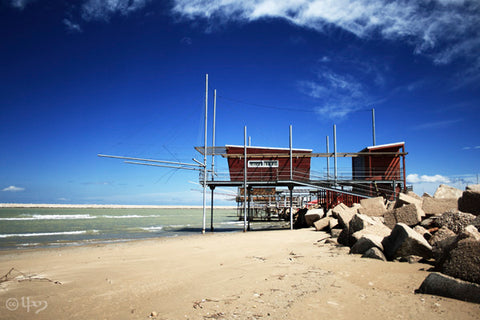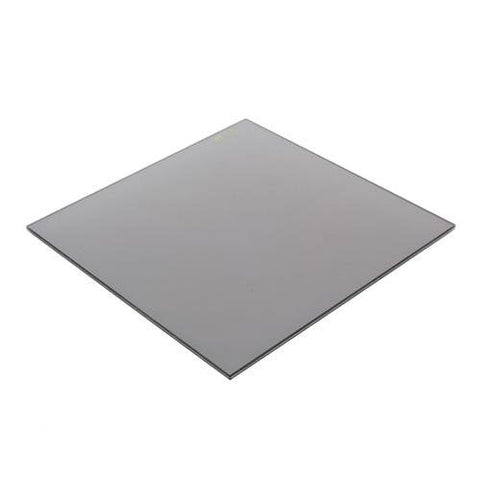Polarizer Philosophy 101
Imaging professionals either Motion Picture or Still Photography are hired for one reason; to get the job done right the first time. Getting the job done can mean many things but it’s almost always about control. Productions hire professionals because they can control a situation expertly. In an age of digital production where the costs seem less than when film medium of choice, there is a pervasive “fix it in post-production” opinion which is sometimes correct and sometimes horrendously wrong.

Digital cameras have come to be treated much like film stocks were treated in the past. A different medium of choice for each production type and style. Optics, camera lenses and filters, have always been used as tools to further differentiate an image. The best cinematographers in the world will all agree that lenses and filters are tools of various effect to differentiate the image. Optical filters will carry the cinematographer into the fray of choices due their overall nature of specifically affecting one to multiple aspects of the image and can provide thousands possible combinations.
Polarizers = Image Control
Polarizers represent one of the most common yet mostly misunderstood optical filters around today. These filters are based on a simple principle yet most are confused as to their use. Polarizers are the one filter effect that cannot be reproduced in post-production because they change the light entering your lens.
Modern file formats and sensor technology have enabled productions to draw dynamic range allowing for grossly under or over exposed images to record and hence recover lost image detail. This provides control of the image however not complete control as you can’t recover what’s not there.
Polarizers enable you to change the way light enters your lens and hence provide ultimate control beyond what isn’t available in post-production.

Without Polarizer
With Polarizer
The light entering your camera is a hot mess. There are light waves going in every direction in a circular pattern and your lens will capture them as they are. This can lead to images that have a flat or washed out appearance. This is due to the light waves reflecting off surfaces at multiple angles. A Polarizer works by controlling these light waves giving you control of your image. Simply rotating a Polarizer can give you less or more color saturation or reflection thus giving you ultimate control of your image.
What does a Polarizer do?
Before we jump into light waves, optical axis, quarter wave plates, right vs left, efficiency ratios, and gigawatts in the soon to ensue nerd-fest, we are creative people and want to know what it does for our image.

Polarizers give you the ability to control the saturation such as how blue is the sky or skin tone of actors. They can also change the reflections on water and windows.
Color saturation is affected because chaotic naturally occurring light can change the appearance of colors washing them out. Changing these light waves with a polarizer will give you deeper blue skies or sweaty actors a more natural skin tone. Actors with darker skin tones will appear less natural especially if they have make up or sweat that is reflecting light. Polarizers give you control in camera that otherwise would crush other colors in post-production.
Linear vs Circular Polarizers
Contrary to common opinion, the physical shape of a Polarizer has nothing to do with the naming of Linear versus Circular. To clear this up, we need to understand how Polarizers work.
Polarizers function by passing light that is coming from many angles into an invisible plate of material that has small parallel bands of material that change the light from many angles to one linear path. This is what is known as a Linear Polarizer.

How a polarizer works
If you add another plate of material going the opposite direction of the linear polarizer, known as a Quarter Wave Plate, the light goes from a linear up and down pattern to a corkscrew-like circular pattern. This is known as a Circular Polarizer.

Circular Polarization
The choice to use Linear vs Circular Polarizers comes down to your camera system. A Linear Polarizer is technically more efficient at changing light angles however it has drawbacks for certain camera systems. It is a long held idea, correctly so, in the still photography world that Circular Polarizers are best. This is because modern auto focus and auto light metering systems require the camera mirror in a DSLR to make the light reading.
Other camera systems that cannot handle linear light waves are 3ccd cameras, also known as three chip cameras, and motion picture film cameras with a video assist to view the image on a monitor before it hits the film.
A Circular Polarizer is required for camera systems that have a mirror of any kind (DSLR or film camera video assist) or a prism to split the light on to 3 sensors like a 3ccd camera.
If your camera doesn’t have 3 sensors or a prism/mirror of any kind, then you can use a Linear Polarizer and gain some small advantage of efficiency of the filter which will require less rotation and therefore more creative choices to over-polarize for extreme color saturation.
Mirrorless cameras or Large Single Sensor cameras like RED and ARRI cameras can use a Linear Polarizer with no fear. These filters also cost less because they have less filter material in them so you don’t have to pay for the extra wave plate found in a Circular Polarizer. Nonetheless, better safe than sorry and most people buy Circular Polarizers just in case.
Left vs Right Hand Polarizers
Don’t get too comfortable yet! In addition to Linear and Circular Polarizers, there are also left handed versus right handed polarizers. In reality it has almost nothing to do with motion picture image capture but you can’t pass yourself off as knowledgeable forum polarizer troll/expert without understanding this principle.

Right and Left oriented Polarizers are always Circular Polarizers and refers to the direction of the corkscrew of light coming from the filter. If the Circular Polarizer filter is right handed then it will rotate the light in a clockwise direction. The light reflected off of the surface will come back opposite counter-clockwise or left handed circularly polarized light. The opposite is true of left handed Circular Polarizers. Since left and right handed polarized light cannot cross each other, this is really useful in creating 3D or other display technology. Back to our regularly scheduled program. . .
Polarizer Practice
What is the right way to use a Polarizer? It’s really very simple. Polarizers should come with a rotation device or be mounted into a device that can rotate the filter. The filter rotation changes the intensity of the effect. A polarizer will work at its best when the light is 90 degrees to the lens axis. Imagine the sun a midday and the camera is pointed straight at the horizon. The direction of rotation really doesn’t matter in polarizers made for photography or motion picture use. Turning the filter to 45 degrees will give you maximum effect on the image.
Polarizer Efficiency
Polarizers have a certain efficiency meaning that the bands of the wave plate material spacing will affect how efficiently they control the light. The more efficiency, the more loss of light or stop loss but also the greater possible effect on saturating colors or removing reflections. This is measured in the ever elusive Extinction Ratio which few manufacturers admit. The simple guide generally is that if a polarizer has 2 more stops of light loss, it will do a better job of giving you more polarization.
The most efficient Polarizers for motion picture use today are the Schneider True-Pol, Tiffen Ultra Pol, Revar Cine Rota-Tray Polarizer, and Formatt Hitech Firecrest Polarizer. All of these are high efficiency and will give you the most polarization options in challenging situations when the light angle gets closer to the lens axis.

Dark corners = optical vignetting
There is such a thing as over-polarization and too much angle of view. If you turn the filter too far, it will give you too much polarization your colors might be too dark. This can make a blue midday sky look like midnight. If you use a lens that has too wide a field of view, you can get more polarization in the corner of the frame than in the center. This change in density looks like mechanical vignetting or dark corners.
Cross-Polarization and Variable ND
A concept closely tied to Polarizer efficiency is cross-polarization. If you take two Polarizers and cross them so that the bands of filter material cross each other, most or all the of the light is blocked which will create light density. This light can be neutral in color and the rotation of polarizers against each other can change how much light is lost.

Revar Cine 4x5.65 2-Stage 2-8 Stop Variable ND Kit
The neutrality of the density created is subject to how closely the spacing of the bands of polarization material are aligned to each other. If the bands are well aligned to each other then light waves will not separate as much and you will get a neutral color density. If the material is not well matched to each other then you will get shift to red or green colors.
Two polarizers crossed against each other has been marketed as Variable Neutral Density filters. The reality is that they will give you density but they must be well matched (=expensive) and assume that your light angle will not change. If you move your camera around in a drone, gimbal, or tripod then your density may change thus messing up your exposure.
Variable Neutral Density filters are also two pieces of glass thus creating double the amount of glass as well as natural reflections and cutting your resolution. The smart folks will say to use a solid ND when possible but if you are in a situation with controlled lighting that does not allow for filter changes then a Variable ND may well be the weapon of choice.
You can make your own DIY Variable ND by using a Linear Polarizer and a Circular Polarizer together. You will likely get color shift and have some reflection problems between the two Polarizers but it is possible to varying success.
Filter Sizes and Material Types
Polarizers can be made from several types of material and composition. The most common for photography and motion picture use is to sandwich the wave plate(s) in between two pieces of glass. The glass types vary from soda lime green color glass found in windows to water white glass made by Schott in Germany or Hoya in Japan.

Sizes that are most common are 4x4 or 4x5.65 inch filters which are generally 4mm thick to fit matte box trays.

2mm thick 100x100mm Polarizer
There are 2mm thick 100mmx100mm (not to be confused with 4x4" 4mm versions for cinema) made for still photography applications however they will only fit into specialty holders made by certain manufacturers such as Formatt Hitech, Cokin, Nisi, or Haida.
9.5" diameter Revar Cine Polarizer for Panavision
Panavision rental company had some fun sizes made that rotate 6 inch or even 9.5 inch dinner plate sized polarizers to cover really big lenses without vignetting. Polarizers have been made in all kinds of sizes such as 2x2”, 3x3”, 4x3” for Optex company custom lens conversions, 5.65x5.65” PV Square, 6.6x6.6”, and a myriad of custom round sizes for behind the lens and middle of lens on certain long telephoto lenses.
Sold! How do I Mount a Polarizer?
Polarizers generally must be rotated unless you have a fixed camera and light position that does not require changing the Polarizer to the scene.

Thread-in Polarizer for photography lenses
Photography lenses all have filter threads for the most part so you can buy a Polarizer that has a rotating ring for angle adjustment.

Bright Tangerine Misfit Atom Pola+
Motion Picture applications often involve lenses that do not have filter threads because they are assumed to be used with a matte box that both serves as a lens shade but also as a filter holder. There have been many types of matte boxes over the years with various sizes of Polarizers that go in them. These matte boxes either have a filter tray that rotates 45 degrees such as the Arri 4x5 LMB Rotational Stage accessory, doesn't at all like the Arri MMB-2, or in the image above with the Bright Tangerine Misfit Atom Pola+ rotates all the way around to hold a Revar Cine 138mm Mounted Circular Polarizer.


Revar Cine 4x5.65 Rota-Tray with Circular Polarizer
Revar Cine makes spinning filter holders that fit into a standard 4x5.65 or 6.6x6.6 matte box but allow rotation of the filter with a wheel on the top or side of the holder. These allow for maximum creative options and can be less cumbersome than a 45 degree rotation found in some matte boxes.
The Revar Cine Rota Tray is a low cost alternative to other rotating filter trays like The Filter Gallery, Lentiquip, Lindsey Optics, and Vantage.
Polarizers from Revar Cine



